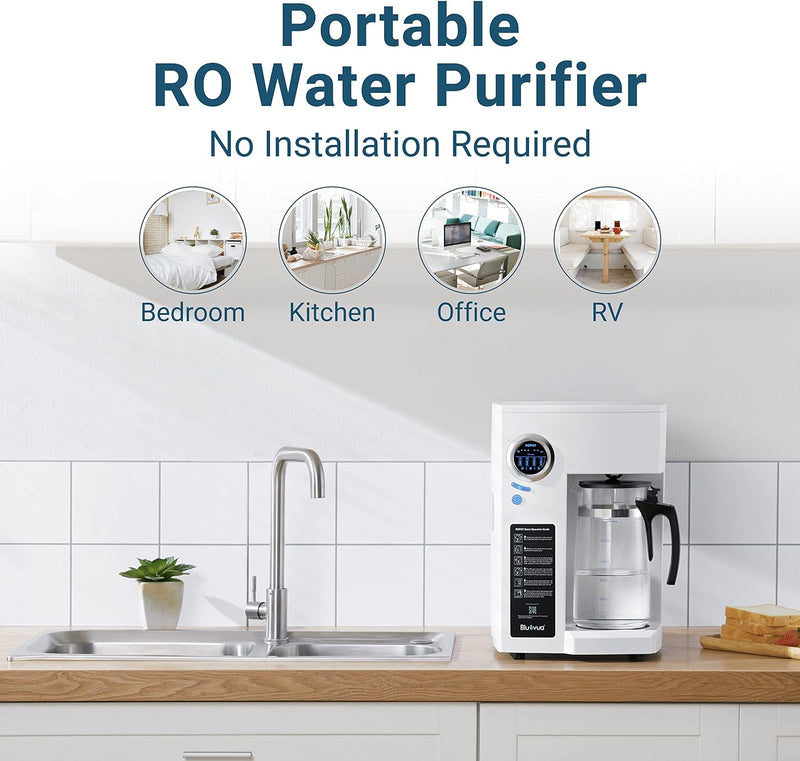Unlock the Secrets of Reverse Osmosis: Transform Your Home Water Today!
In today's world, where water pollution is an increasing concern, the importance of clean drinking water cannot be overstated. With contaminants lurking in our water supply, finding reliable purification methods is essential for our health and well-being. One such method that has gained popularity is reverse osmosis (RO). This innovative water purification process not only ensures that you and your family have access to safe drinking water, but it also enhances the taste and quality of your water. In this article, we will explore the functionality and benefits of reverse osmosis water filters for home use, helping you make an informed choice for your household.

Understanding Reverse Osmosis
Reverse osmosis is a water purification technology that utilizes a semi-permeable membrane to remove impurities from water. The process involves applying pressure to the water, forcing it through the membrane, which traps contaminants while allowing clean water to pass through. This method is particularly effective at removing dissolved solids, bacteria, and other harmful substances. A typical reverse osmosis system consists of several components, including pre-filters to remove larger particles, the RO membrane itself, and post-filters to polish the water before it reaches your tap. Together, these components work to ensure that you receive high-quality, purified water straight from your home.
How Reverse Osmosis Works
The reverse osmosis process involves several key steps that work together to purify your water. First, the incoming water passes through pre-filters, which capture sediment and chlorine that could damage the RO membrane. Next, the water is pressurized, typically using a pump, which forces it through the semi-permeable membrane. This membrane has tiny pores that allow only water molecules to pass while blocking larger molecules and contaminants. After passing through the membrane, the purified water is collected in a storage tank, while the remaining contaminants are flushed away as wastewater. Finally, the clean water may go through additional post-filters for taste enhancement before reaching your faucet. This multi-step process ensures that the water you consume is free from harmful substances.
Benefits of Reverse Osmosis for Home Use
Investing in a reverse osmosis water filter for your home comes with a plethora of benefits. One of the most notable advantages is the significant improvement in taste. Many users report that their water tastes fresher and cleaner after filtration. Additionally, reverse osmosis systems are highly effective at removing a wide range of contaminants, including lead, chlorine, fluoride, and other harmful substances. This purification process not only contributes to better tasting water but also promotes better overall health by reducing your exposure to these contaminants. Furthermore, families with young children or individuals with compromised immune systems can greatly benefit from the added layer of protection that RO systems offer.
Environmental Impact
Beyond personal health benefits, reverse osmosis systems also contribute positively to the environment. By utilizing a home filtration system, you can significantly reduce your reliance on bottled water, which is a major contributor to plastic waste. Each year, millions of plastic bottles end up in landfills and oceans, harming wildlife and ecosystems. By switching to filtered water, not only do you reduce your carbon footprint, but you also help promote a more sustainable lifestyle. This shift towards using RO water can inspire others in your community to consider similar changes, fostering a culture of environmental consciousness.
Considerations When Choosing a Reverse Osmosis System
When selecting a reverse osmosis system for your home, there are several important factors to keep in mind. First, assess your water quality by testing for contaminants that may be present in your supply. This will help you choose a system that effectively addresses your specific needs. Next, consider the system’s capacity, which refers to how much purified water it can produce in a given time frame. Larger households may require systems with higher output. Additionally, maintenance requirements are crucial; some systems may need more frequent filter changes and servicing than others. Taking the time to evaluate these factors will ensure that you choose a reverse osmosis system that best fits your lifestyle and water quality needs.
Embracing the Benefits of Reverse Osmosis for Better Health
In summary, reverse osmosis water filters offer a multitude of benefits for home use, from improving water taste to enhancing health by removing harmful contaminants. As we face increasing concerns regarding water quality, implementing a reverse osmosis system in your home can be a proactive step towards ensuring better health for you and your family. By choosing to invest in clean water, you not only make a wise decision for personal wellness but also contribute to a more sustainable future. Take the time to explore your options and consider the significant impact a reverse osmosis water filter can have on your daily life.






تعليقات